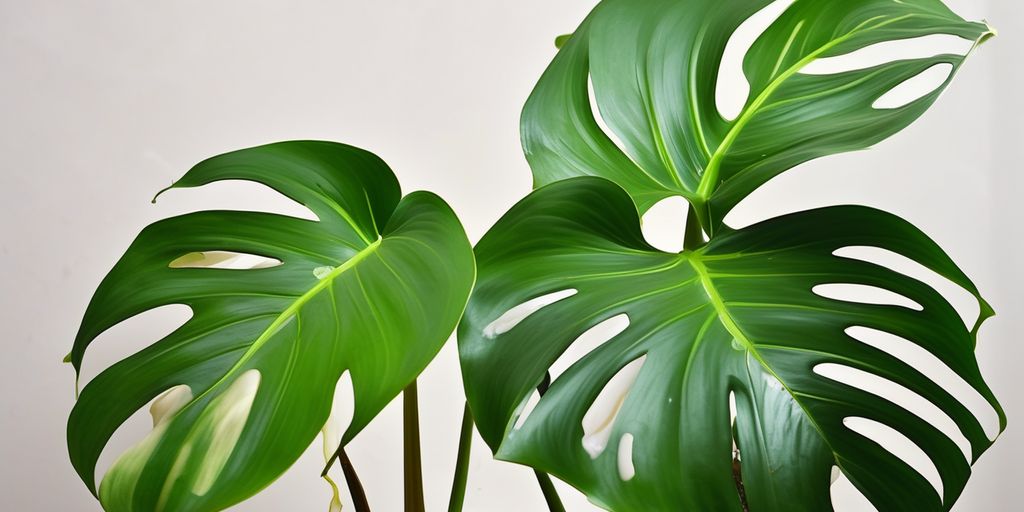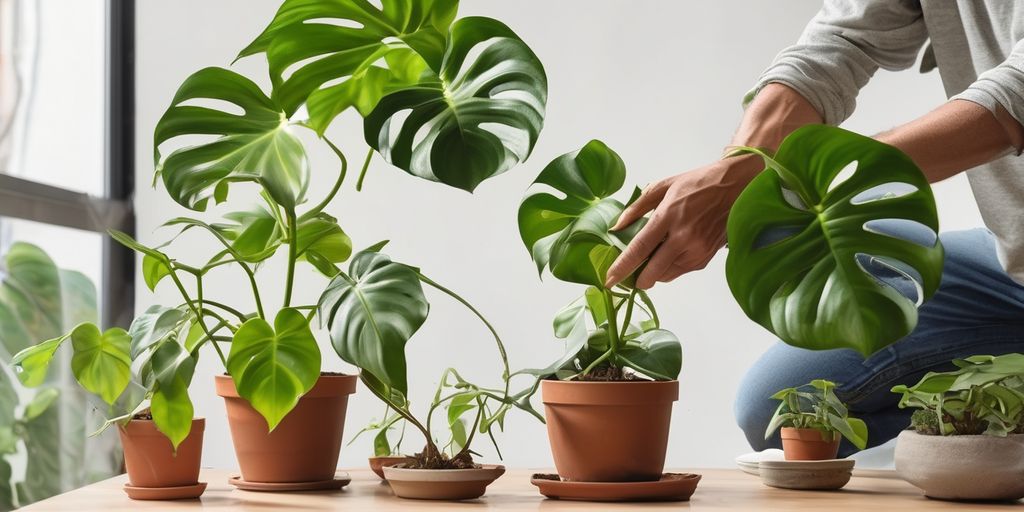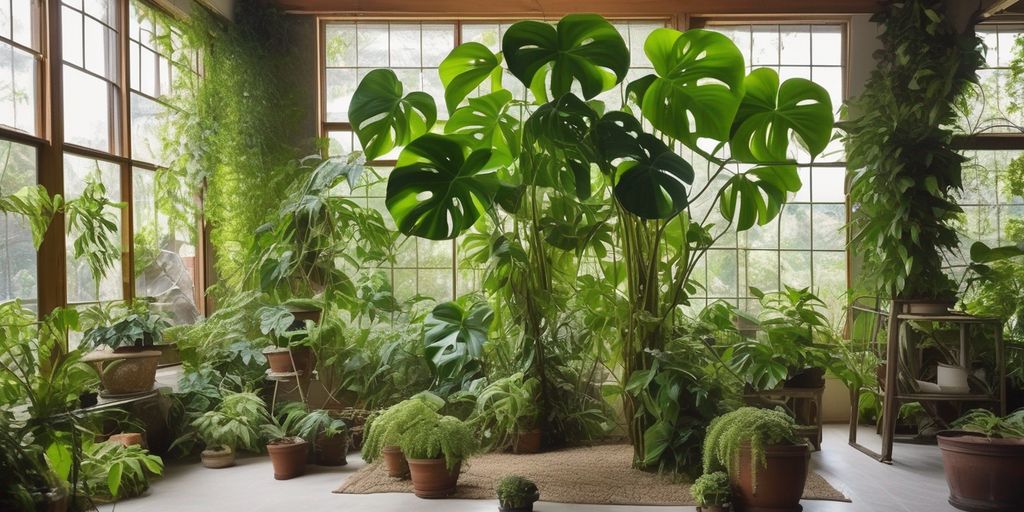The Philodendron Paraiso Verde, a stunning variety of the Philodendron family, captivates with its vibrant, variegated foliage and elegant form. This comprehensive article will explore the beauty, cultivation, and practical applications of this exquisite plant, providing insights into its unique characteristics and care requirements. Whether you’re a seasoned gardener or a novice plant enthusiast, understanding the nuances of Philodendron Paraiso Verde can enrich your gardening experience and enhance your living spaces.
Contents
- 1 Unveiling the Beauty of Philodendron Paraiso Verde
- 2 Cultivation and Care
- 3 Propagation Techniques
- 4 Philodendron Paraiso Verde in Interior Design
- 5 Philodendron Paraiso Verde in Outdoor Landscapes
- 6 Conservation and Ethical Considerations
- 7 The Science Behind the Plant
- 8 Conclusion
- 9 Frequently Asked Questions
- 9.1 What are the distinctive features of Philodendron Paraiso Verde?
- 9.2 How should I care for my Philodendron Paraiso Verde?
- 9.3 What are common pests that affect Philodendron Paraiso Verde?
- 9.4 What are some effective propagation techniques for Philodendron Paraiso Verde?
- 9.5 Can Philodendron Paraiso Verde be used in outdoor landscaping?
- 9.6 What are the ethical considerations in cultivating Philodendron Paraiso Verde?
Key Takeaways
- Philodendron Paraiso Verde is known for its striking variegated leaves, making it a popular choice for both indoor and outdoor decoration.
- Proper cultivation involves understanding the specific light, temperature, and humidity requirements of the plant.
- Effective propagation can be achieved through methods such as stem cuttings, layering, and seed germination.
- Incorporating Philodendron Paraiso Verde into interior and landscape designs can elevate the aesthetic appeal of any space.
- Conservation and ethical considerations are crucial for sustainable cultivation and ensuring the plant’s longevity and health.
Unveiling the Beauty of Philodendron Paraiso Verde
Distinctive Features
The Philodendron Paraiso Verde is renowned for its vibrant, variegated leaves that make it a standout among houseplants. Each leaf is unique, with patterns that can resemble strokes of paint against a lush green backdrop.
Color Variations
This plant exhibits a dynamic range of greens, from deep emerald to light lime. The variegation can appear as blotches or streaks, adding to the visual interest of each specimen.
Leaf Texture and Shape
The leaves of the Philodendron Paraiso Verde are not only beautiful but also texturally distinct. They are typically large, with a glossy finish that enhances their color depth. The shape can vary from heart-shaped to elongated, providing an elegant appearance.
Cultivation and Care
Optimal Growing Conditions
Philodendron Paraiso Verde thrives in a warm, humid environment with indirect, bright light. Ensure the temperature remains between 65°F to 80°F (18°C to 27°C) for optimal growth. High humidity levels, ideally around 60% or higher, mimic the plant’s natural habitat.
Watering and Feeding Requirements
Water the Philodendron Paraiso Verde when the top inch of soil feels dry. Use a well-draining potting mix to prevent waterlogging. Feed with a balanced, water-soluble fertilizer every month during the growing season. Reduce watering and feeding in the cooler months.
Common Pests and Diseases
Philodendron Paraiso Verde is susceptible to pests such as spider mites, mealybugs, and aphids. Regularly inspect the leaves for signs of infestation. Treat with neem oil or insecticidal soap as a safe and effective remedy. Prevent diseases by ensuring good air circulation and avoiding overhead watering.
Propagation Techniques
Stem Cuttings
Stem cuttings are the most popular method for propagating Philodendron Paraiso Verde. To successfully propagate, select a healthy stem with at least two nodes. Cut just below a node, and place the cutting in water or moist soil. Roots typically develop within a few weeks.
Layering
Layering involves encouraging roots to form on a part of the plant while it is still attached to the parent. This can be done by bending a low-hanging stem to the ground, slightly wounding it, and covering the wounded part with soil. Secure the stem in place and wait for roots to develop before severing it from the parent plant.
Seed Germination
While not as common due to the slow growth and lower success rate, seed germination is another method of propagating Philodendron Paraiso Verde. Seeds should be sown in a well-draining soil mix and kept at a consistent temperature of about 25°C (77°F). Germination can take several weeks, and patience is crucial during this process.
Philodendron Paraiso Verde in Interior Design
Styling Tips
When incorporating the Philodendron Paraiso Verde into your interior design, consider its vibrant green hues as a natural accent in minimalist or monochrome spaces. Position the plant in a location where it can be a focal point, such as near a window or in the center of a room. Utilize hanging baskets or high shelves to take advantage of its cascading foliage.
Complementary Plants
To create a harmonious indoor garden, pair the Philodendron Paraiso Verde with plants that have similar care needs but contrasting colors or textures. Good companions include the Monstera deliciosa for its larger leaves and the delicate ferns for a textural contrast. Here’s a simple list of complementary plants:
- Monstera deliciosa
- Ferns
- Snake plants
Choosing the Right Pot
Selecting the right pot for your Philodendron Paraiso Verde is crucial not only for the health of the plant but also for enhancing your decor. Opt for pots with drainage holes and choose materials like ceramic or terracotta that complement your interior style. For a modern look, consider sleek, geometric designs or for a more rustic appeal, go with natural textures.
Philodendron Paraiso Verde in Outdoor Landscapes
Suitable Outdoor Conditions
Philodendron Paraiso Verde thrives in warm, humid environments with indirect sunlight. Ensure the soil is well-draining and rich in organic matter to promote healthy growth. Avoid areas with direct, harsh sunlight as it can scorch the leaves.
Landscape Design Ideas
Incorporating Philodendron Paraiso Verde into your garden can create a tropical oasis. Use it as a backdrop for smaller, colorful plants or alongside water features. Its large, vibrant leaves make it an excellent choice for creating visual impact and a sense of lushness.
Integration with Other Flora
Philodendron Paraiso Verde pairs well with other shade-loving plants. Consider companions like ferns, hostas, and caladiums to enhance the texture and color contrast in your garden. This plant’s adaptability makes it a versatile addition to any outdoor space.
Conservation and Ethical Considerations
Sustainable Cultivation
Philodendron Paraiso Verde should be cultivated sustainably to ensure its longevity and minimal environmental impact. Practices such as using organic fertilizers, recycling water, and employing soil conservation techniques are essential. Sustainable cultivation not only preserves the natural habitat but also supports local biodiversity.
Legal Restrictions
Various countries have implemented legal restrictions to protect native flora, including the Philodendron Paraiso Verde. It is crucial to be aware of and comply with these regulations to prevent illegal trade and ensure the plant’s survival in its natural habitat. Violations can lead to severe penalties.
Ethical Collecting
Collecting plants from the wild, especially rare species like Philodendron Paraiso Verde, must be done ethically and responsibly. Collectors should always have the necessary permits and ensure that their actions do not deplete natural populations. Supporting nurseries that propagate plants in-vitro can be a more sustainable alternative.
The Science Behind the Plant
Genetic Makeup
Philodendron Paraiso Verde boasts a complex genetic structure that contributes to its vibrant coloration and resilience. Research has identified several unique genes responsible for its ability to adapt to varying light conditions and resist common pathogens.
Adaptations
This plant has developed remarkable adaptations to thrive in low-light environments. Its large leaves maximize the surface area to absorb more light, which is crucial for photosynthesis. The glossy texture of the leaves also helps in repelling dust and pests, enhancing its survival in indoor conditions.
Research and Studies
Recent studies have focused on the plant’s ability to purify air, making it not only a decorative choice but also a functional one for improving indoor air quality. Findings suggest that the Philodendron Paraiso Verde can remove volatile organic compounds (VOCs) effectively:
| Study | VOC Removal Rate |
|---|---|
| Study A | 78% |
| Study B | 85% |
This plant continues to be a subject of interest due to its dual benefits of aesthetics and air purification.
Conclusion
In conclusion, the Philodendron Paraiso Verde stands out as a remarkable specimen in the world of houseplants. Its vibrant, variegated leaves bring a touch of the exotic to any indoor space, making it a favorite among plant enthusiasts. Whether you’re a seasoned gardener or a novice looking to enhance your home with greenery, the Paraiso Verde offers both aesthetic appeal and ease of care. Embracing this lush, elegant plant can transform your living space into a serene, inviting environment, connecting you closer to nature’s unmatched beauty.
Frequently Asked Questions
What are the distinctive features of Philodendron Paraiso Verde?
Philodendron Paraiso Verde is known for its vibrant green color, large glossy leaves, and the unique variegation that appears as the plant matures.
How should I care for my Philodendron Paraiso Verde?
Provide bright, indirect light, maintain humidity levels around 60%, and water when the top inch of soil feels dry.
What are common pests that affect Philodendron Paraiso Verde?
Common pests include spider mites, mealybugs, and aphids. Regularly inspect your plant and treat infestations early with appropriate measures.
What are some effective propagation techniques for Philodendron Paraiso Verde?
Stem cuttings, layering, and seed germination are effective methods. Stem cuttings are the most popular due to their ease and higher success rate.
Can Philodendron Paraiso Verde be used in outdoor landscaping?
Yes, in suitable climates. It thrives in warm, humid environments with indirect sunlight. It can be a stunning addition to tropical-style gardens.
What are the ethical considerations in cultivating Philodendron Paraiso Verde?
Ensure that your plants are sourced from reputable nurseries that adhere to sustainable cultivation practices and comply with local and international regulations.




